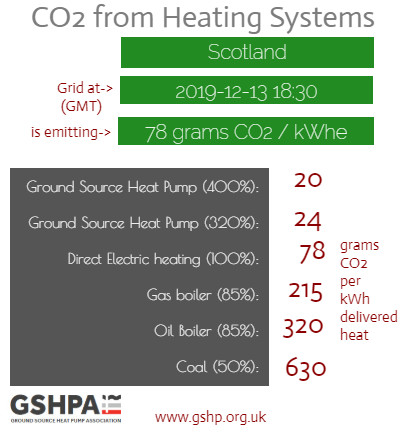Uncomfortable Home Truths:
Why Britain urgently needs a low carbon strategy
15 October 2019
The Carbon Connect think tank launched its report on 15 October. The 68 page summary of existing domestic heating in the UK and the analysis of why Britain needs a low carbon heat strategy is clearly laid out in a well balanced document. We recommend you read Uncomfortable Home Truths, but for those short of time we have drawn out some interesting quotes from the report:
Only 4.5% of the UK's total heat demand in buildings is currently met by low carbon sources. Most homes (84%) are connected to the gas grid and heated primarily by natural gas boilers.
Domestic heat contributes 13% to the UK's annual carbon footprint - three times greater than waste's contribution and comparable to that of all petrol and diesel cars in the UK combined.
Currently, deployment of low carbon heat in the UK is very low, and most of the technologies already deployed are not those most likely to be used for long term widespread decarbonisation, such as biomass boilers. Instead, those options considered to have most potential for large-scale decarbonisation of heat, including electric heat pumps, hydrogen boilers, gas hybrid heating systems and district heat networks, are not yet deployed widely, even in new build.
Increasing engagement and awareness needs to be a core part of a policy framework for a transition to low carbon heat.
Almost all low carbon heating systems are expected to be more expensive on a whole-system basis than current natural gas heating provided through the grid.
Higher energy prices are challenging not only for those already in fuel poverty – 2.5 million people in England alone – but also for those who are at risk of fuel poverty. A mismanaged transition to low carbon heat could create as many as 2.6 million additional fuel poor households across Great Britain, if policies are not implemented in a way that protects those who are vulnerable.
To meet even our previous target of an 80% reduction in emissions by 2050 - let alone our new net zero target - it is estimated that existing homes will need to switch to low carbon heating at a rate of 20,000 every week between 2025 and 2050.
BEIS should incentivise at-scale early uptake of low carbon heating, with a new scheme in place by 2021 when the Renewable Heat Incentive comes to an end. This could include consumer support such as grants and VAT incentives, and industry-wide measures such as a low carbon gas obligation.
Heat currently represents around one third of the UK's total greenhouse gas emissions, with 45% of the UK's energy consumption used for heating buildings. Much of this comes from natural gas.
Every year around 1.6 million natural gas boilers are installed in the UK. By comparison, only 1 million homes in total have low carbon heating systems in the UK. Around 20,000 heat pump units were sold in 2017.
The NAO estimates that the number of installations under the RHI will reach 111,000 by its end date in March 2021, only 22% of original expectations. The reasons that the RHI did not have the expected uptake includes the high initial cost of purchase and installation of low carbon heat, and the uncertainty over returns arising from the system of automatic tariff reductions known as degression. BEIS admitted it had not carried out enough consumer research to understand these barriers prior to launching the scheme.
It is generally found that people would only be motivated to change to a new heating system if there is a strong financial case for doing so.
Extensive international evidence shows that setting clear, stable policy through a package of incentives, taxation, regulation and subsidies is critical to delivering low carbon heat. This means that there is an essential role for government to provide consistent targets and trajectories for a transition to low carbon heat.
50,000 heat pumps have been installed in the UK since 2014 under the RHI. Heat pump technology is well developed and widely deployed in other European countries.
District heat networks are suited to dense urban areas. While many existing networks use heat from a natural gas source, alternative heat sources (such as waste heat from industrial processes, heat pumps or other sources of low carbon heat) could be added to the network without disruption to end users.
See Renewable Heating See Renewable Cooling


